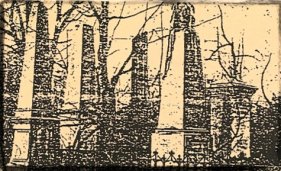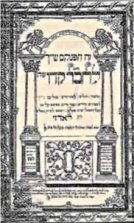The Lodz Chevra Kadisha Indexing Project
About the Project
At the 2000 Conference on Jewish Genealogy in Salt Lake City, JRI-Poland announced plans for a new initiative to index the Lodz Chevra Kadisha (Burial Society) records, which includes the burial records of the Old Cemetery in Lodz.
The Old Lodz Cemetery was established in 1811 and essentially closed in 1892. However, burials continued to take place until 1922 because a number of burial plots had been previously purchased and because it became necessary to utilize the cemetery during World War I.
The Lodz Chevra Kadisha records include the more than 5,400 deaths listed in Stary Cmentarz Zydowski w Lodzi (The Old Cemetery of Lodz), published by the Jewish Community of Lodz in 1938. The authors, noted historians Philip Friedman and Rabbi Pinchas Gliksman, had no way of knowing how invaluable their efforts would become: within a year, the Nazis had invaded Lodz and, during the course of the occupation, removed the gravestones from the Old Lodz Cemetery for use as paving stones. The exact number of burials or gravestones in the Old Lodz Cemetery is not known. This book has now become available online and is an invaluable resource of the history of the Jews in Lodz.
JRI-Poland took on this indexing project with the enthusiastic support of Mr. Symcha Keller, head of the Jewish Community of Lodz. To view the project status, visit the project card.

The Chevra Kadisha records are made up of two separate lists, each with its own numbering system. The first list is the Polish Subsidiary Death Register, 1826-1893, containing 2,034 entries. This list includes the individual’s surname, given name, age, day, month and year of death. In some instances a maiden surname is included. Only adults ages 16 and over are included in this list. The registry numbers begin with #3412 and are preceded by a “P”. This list consists of individuals whose names appear in the Chevra Kadisha records but no corresponding gravestone was found.
The Hebrew List of Burials, 1822-1922, is a record of 3,411 individuals whose graves were marked with gravestones in the Old Lodz Cemetery. This list contains the same information as in the Polish list, with the addition of the father’s name, and whether the individual was a kohen or levy. As a rule, children’s graves were not marked with gravestones in the Old Lodz Cemetery. However, the exceptions to this rule are included in the data. Registry numbers begin with #1, end with #3411, and are preceded by an “H”. Occasionally an individual may be included in both the Hebrew and Polish lists. Surnames and ages were added by reference to the Civil Registers of deaths.

The Lodz Chevra Kadisha Indexing Project should be of interest to anyone with Jewish roots in the Lodz region. As a result of the great influx of workers to Lodz in the 19th century, records include not only individuals who were born and lived in Lodz proper, but also those with roots in many regional Polish villages and towns. Some of the records in the Hebrew and Polish lists may coincide with data already in the JRI-Poland database and will provide additional valuable information for anyone researching their family in this region.
A few notes about the information presented. Often names on tombstones are in a more formal Hebrew than a person might have been known in life or in civil records. For example, a person known in life by their Yiddish name Hersz may have had the Hebrew equivalents of Tzvi or Naftali on their headstone.
Additionally, many entries in the Hebrew list did not have surnames attached. This is likely because the original researchers could not match it with a civil register. Either the information on the stone was not clearly readable, or the person’s death may not have been registered with the civil authorities.
In many instances, we were able to translate and summarize inscriptions on the stones that were noted in the Hebrew list. However, in many cases, the inscriptions were too lengthy to be translated or summarized, so we simply noted that there was a tombstone inscription associated with this person. Since each burial has a unique number, a researcher should be able to locate the inscription on the Hebrew list.
Finally, the source book had biographies in Polish of individuals the authors considered significant. We have linked those biographies to the search results.
The first phase of this project, indexing of the Polish Subsidiary Death Register, was completed and added to the JRI Poland searchable database in 2001. Data entry was done by Shirley Rotbein Flaum and proofreading by Morris Wirth. The data was first entered from the original text in Stary Cmentarz Zydowski w Lodzi. Feminine surname suffixes such as “ówna” and “owa” were removed and the feminine suffix “a” altered. Alternate surname spellings were added, where deemed necessary by experts consulted or by the fact that an alternate spelling may have been found in the index of the book. Known typographical errors in the original data were corrected.
The second phase, indexing of the Hebrew List of Burials, is now complete. Hebrew-speaking volunteers, under the leadership of Shirley Rotbein Flaum, translated entries and verified Hebrew dates. The dedicated volunteers involved with this second phase are: Gilbert Hendlisz, Shmuel Kehati, Sarah Lasry, Yaacov Lipkin, Hanoch Magal and Israel Pickholtz. Additional editing and combination of the two separate lists was performed by Joe Ross.
A list of unique surnames taken from the data is available below.
To view the project status, visit the project card.